Lifestyle
Web Development: Top Trends and Tools in 2025 Guide
Introduction to web development
Web development means building websites or web applications for the internet or private networks. It covers everything from a simple page of text to complex sites with e‑commerce, social features, or data processing.
Web development includes front‑end work like design and user interface, back‑end logic and databases, and content systems like CMS. People work on security, server setup, scripting, and maintenance. Developers may specialize as front‑end, back‑end, or full‑stack. The field has grown enormously, and many businesses now depend on good web development to reach customers, operate online, and stay competitive.
This article dives into the latest web development trends for 2025, explains why businesses need it, and shows how to build modern, fast, and safe websites using simple language.
What is web development and why it matters
The phrase web development covers the technical steps used to build and run websites or web apps. These steps include writing code (HTML, CSS, JavaScript), setting up servers, designing pages, and securing data.
Businesses rely on web development to appear online, serve customers, and sell goods or services. A good website acts like a digital storefront. It is open 24/7 and can reach people anywhere.

Without it, many customers may never find you. Reliable web development makes sites load fast, look modern, and work on phones and laptops. It also protects personal data and helps your site rank better in search engines. Ultimately, web development gives businesses a foundation to grow, serve clients, and share their message online.
Leading trends in web development for 2025
In 2025, web development is evolving fast. New tools and ideas are changing how developers build and manage sites. Artificial Intelligence plays a huge role now. AI tools like GitHub Copilot write code parts, fix bugs, or suggest changes. This cuts out routine tasks and lets developers focus on creative work.
AI also powers chatbots and personalized content based on user behavior. Progressive Web Apps (PWAs) keep growing. PWAs feel like mobile apps.they load fast, work offline, and send push messages. They cut development cost by using one code base for web and mobile. Voice search optimization becomes essential.
With smart speakers and voice assistants, sites need natural language and structured data to show up in voice results. Motion UI and micro‑interactions add subtle animations and feedback. They make sites feel alive and guide users through content. WebAssembly (Wasm) allows heavy tasks like 3D graphics to run in the browser fast. Serverless architecture and API‑first design let developers build scalable, flexible systems without managing servers. Web development in 2025 is about smarter, faster, flexible, and secure experiences.
AI and Automation in web development
AI tools now help with many stages of web development. Tools like GitHub Copilot and GPT‑based systems help write code, debug, and create features from plain language prompts. Developers can turn design files into HTML/CSS automatically.
On the user side, AI‑powered chatbots handle questions any time. These chatbots follow rules and learn from user input. They reduce customer support costs and improve engagement. AI also helps personalize website content. It shows items people may like, adjusts layout based on past behavior, or suggests pages. This keeps users engaged and returning.
AI speeds up development and gives smarter, more responsive websites. It also helps improve SEO by suggesting keywords, meta tags, and content tweaks. Overall, AI makes web development faster, easier, and more effective for both developers and users.
Progressive Web Apps (PWA) and motion design
Progressive Web Apps are a key part of modern web development. They offer app‑like experience right in the browser. PWAs load fast, let users work offline, and send push notifications. They can show on the home screen without app store. For small businesses, PWAs reduce cost and increase engagement.
Motion UI and micro‑interactions bring life to web pages. Subtle animations for button clicks, hover effects, and page transitions create a smooth experience. These features keep users interested and guide them to key content. Developers use libraries like Framer Motion or GSAP to build motion. PWAs combined with motion UI result in smooth, fast, and engaging websites that work on mobile and desktop.
Voice search optimization in web development
Voice search is changing how people find information. Devices like Alexa, Siri, and Google Assistant let users talk to search engines. They expect answers in natural language and simple format. To support voice search, web development now focuses on using long‑tail keywords, schema markup, and Q&A content formats.
Developers structure pages to answer common questions clearly so voice assistants can read them aloud or show them. Those changes help sites rank higher in voice queries. Voice search is especially important for local searches like “web development services near me” or “best web development in Faisalabad.”
High performance: WebAssembly, serverless, API-first architecture
High performance matters in web development. Visitors expect pages to load fast and apps to respond instantly. WebAssembly (Wasm) helps by running heavy code (like Rust or C++) in the browser. This makes applications like games or design tools behave smoothly without plugins. Serverless architecture shifts backend tasks to cloud providers like AWS Lambda or Azure Functions.
Developers write code without managing servers. It scales automatically and costs less. API‑first development focuses on building APIs before front‑end code. This lets teams build web, mobile, or IoT interfaces using the same backend. It makes integration easier and the structure more flexible.
Security and sustainable web development
In web development, strong security and eco‑friendly design are both essential. Cyberattacks rise each year. Developers must use HTTPS, multi‑factor authentication, strong encryption, and regular audits. Sites need to follow privacy laws like GDPR or CCPA. These steps keep user data safe and build trust. Sustainability matters too. Green hosting and clean code reduce energy use.
Simple, minimal code, optimized images, and efficient styling help reduce the carbon footprint. Even serverless setups consume less power. More businesses care about eco-conscious practices. A sustainable site appeals to users who care about the planet. It can also reduce hosting costs over time.
Tools and platforms in modern web development
Many tools support today’s web development. No‑code/low‑code platforms let users build sites with drag‑and‑drop interfaces. They help small businesses or startups launch fast. Examples include Webflow, Bubble, and Airtable. For complex sites, developers use frameworks like React, Angular, Vue.
They help build Single Page Applications (SPAs) with quick navigation and dynamic content. Headless CMS platforms like Strapi, Sanity, or Contentful let content teams manage data separately from design. This content feeds multiple channels via API. Other tools include GitHub Copilot for AI‑assisted coding and tools that convert designs to code. Many teams now use Agile or continuous deployment workflows. These tools speed up development, reduce errors, and support growth.
Table: Comparison of Platforms
| Platform Type | Description | Best For |
| No‑code/Low‑code | Drag & drop website builders | Simple sites, MVPs, testing ideas |
| SPA frameworks | React, Vue, Angular | Interactive single‑page apps |
| Headless CMS | Strapi, Sanity, Contentful | Multi‑channel content delivery |
| AI coding tools | GitHub Copilot, GPT‑engine | Speed up coding and prototyping |
| Serverless functions | AWS Lambda, Azure Functions | Flexible backend without servers |
This table shows key tools and their use in web development. Each one fits different needs and project sizes.
Building a web development project: steps and tips
Building good web development starts with clear goals. First, define what your site must achieve. Do you need to sell products, collect leads, or share information? Decide who your audience is. Next, choose a platform: will you code, use a CMS, or pick no‑code tools? Then design pages that load fast and work on phones and screens. Create content in simple language. Include keyword web development in titles, headings, and paragraphs. Use schema markup to improve SEO. Add motion UI or micro‑interactions to guide visitors. Consider voice search when writing content.
Select hosting that supports HTTPS, fast loading, and backups. Use serverless or cloud options for flexibility. Build your backend using API‑first architecture if you expect growth. Test your site for speed, accessibility, and security. After launch, update regularly. Use analytics to see visitor behavior and improve over time. Above all, keep content fresh, secure, and user‑centered.
FAQ about web development
What is web development?
Web development involves creating websites or web apps. It includes writing code, designing interfaces, managing servers, and securing data.
Why is web development important for business?
Web development helps businesses reach customers online, serve them 24/7, build trust, and sell goods or services efficiently.
What are Progressive Web Apps (PWAs)?
PWAs are web apps that work offline, load fast, and feel like mobile apps without downloads. They improve performance and user engagement.
Is AI replacing web developers?
AI helps automate tasks, write code, and improve user experience. It speeds up work but does not replace the creativity and planning of developers.
What trends shape web development in 2025?
Major trends are AI‑powered tools, PWAs, voice search, motion UI, WebAssembly, serverless architecture, headless CMS, and eco‑friendly design.
Final thoughts
Web development continues to evolve rapidly. In 2025, successful websites rely on web development strategies that combine AI, high performance, user‑friendly design, and strong security. By embracing trends like PWAs, voice optimization, WebAssembly, serverless computing, and sustainable design, businesses and developers can build sites that meet user needs and search engine standards.
Use simple language, short sentences, and active voice. Keep content fresh, keyword‑rich, and engaging. With the right tools and plans, web development offers a clear path to building modern, fast, secure online experiences that last.
Lifestyle
Kawasaki Z650: Power, Performance, and Style Combined
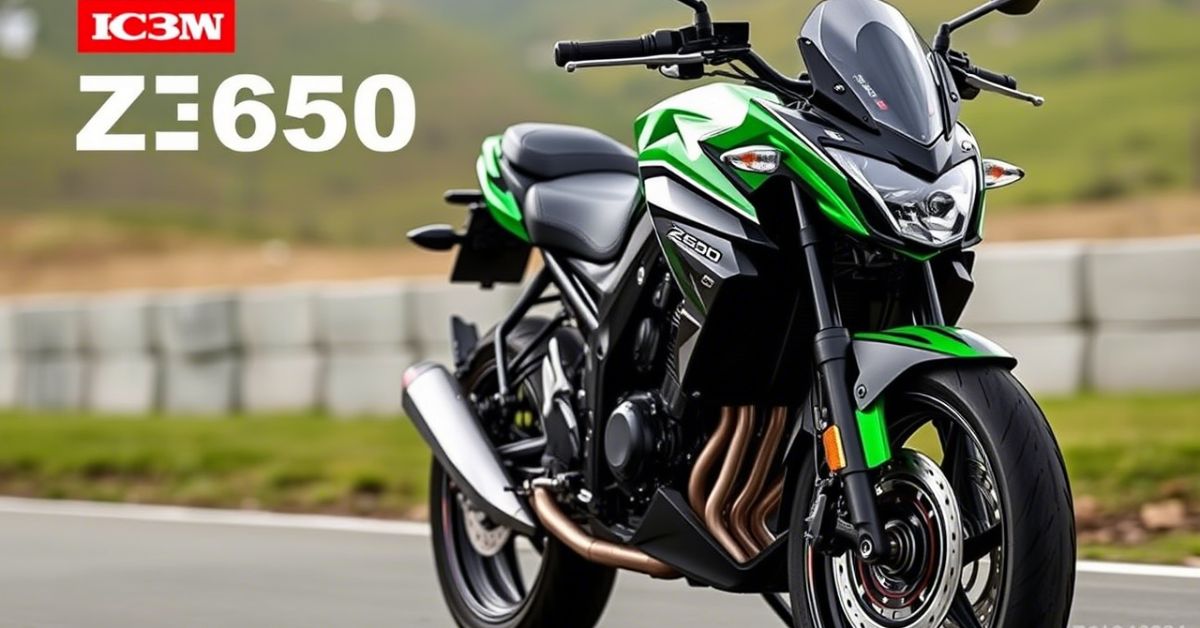
Kawasaki Z650: A Complete Guide to This Stylish Streetfighter
The Kawasaki Z650 is one of the most popular middleweight naked bikes in the market. It combines aggressive looks with smooth performance and rider-friendly handling. For riders looking for a balance between everyday use and sporty character, this bike is an excellent choice.
It sits in the middle of Kawasaki’s Z series and carries a legacy of streetfighter design, excellent road manners, and reliability. Whether you’re a new rider or someone looking to upgrade, the Z650 makes a strong case with its bold style, modern tech, and refined engine.
In this article, we’ll explore everything about the Kawasaki Z650 from its design and engine to performance, features, mileage, price, and more.
Design and Styling of Kawasaki Z650
The Kawasaki Z650 stands out with its sharp, edgy design. It gets the “Sugomi” styling language seen in other Z-series bikes. The bike has a muscular fuel tank, sharp headlamp, and a minimalist rear end, giving it an aggressive look.
The LED headlight is sleek and blends well with the front design. The bike also features modern graphics and bold colors that catch the eye. Its naked design gives it a raw streetfighter appearance, perfect for those who like sporty styling.
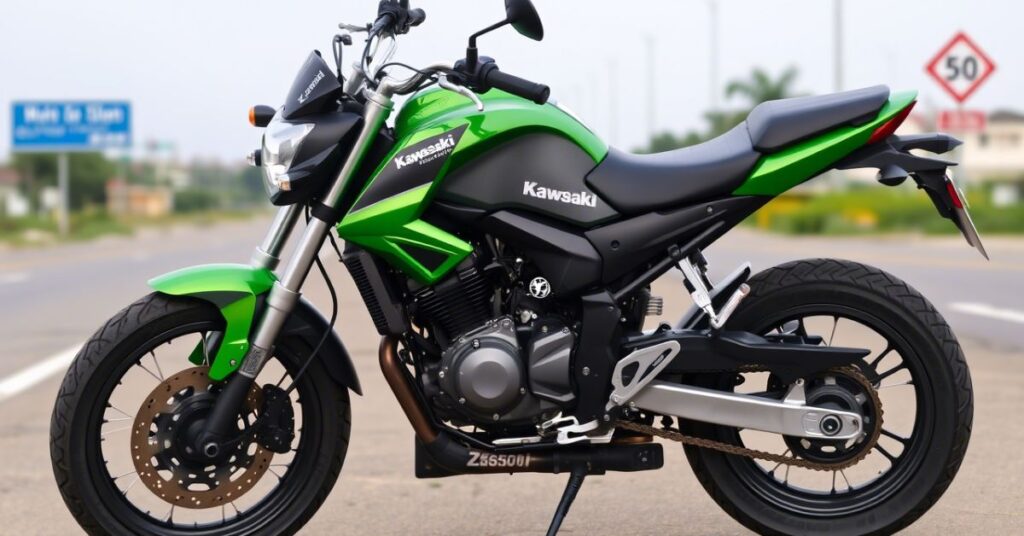
Kawasaki offers the Z650 in multiple color options, and the attention to detail in the paint quality is impressive. The exposed frame adds to the aggressive character. The overall fit and finish reflect the brand’s premium touch.
Its upright riding posture also adds to the appeal, offering comfort while keeping the sporty feel. Whether standing still or on the move, the Kawasaki Z650 looks fast and stylish from every angle.
Engine and Performance of Kawasaki Z650
The heart of the Kawasaki Z650 is a 649cc, parallel-twin engine. It delivers smooth and refined power, ideal for both city riding and highway cruising. The engine is liquid-cooled and fuel-injected, which means better performance and fuel efficiency.
It produces around 68 horsepower and 64 Nm of torque. These numbers may not seem extreme, but the real joy comes from how responsive the engine feels. It’s tuned to offer good low-end and mid-range power, which makes it fun in traffic and on twisty roads.
The 6-speed gearbox shifts smoothly, and the slipper clutch helps in smoother downshifts. The power delivery is linear, which means new riders won’t find it overwhelming, but experienced riders will still enjoy it.
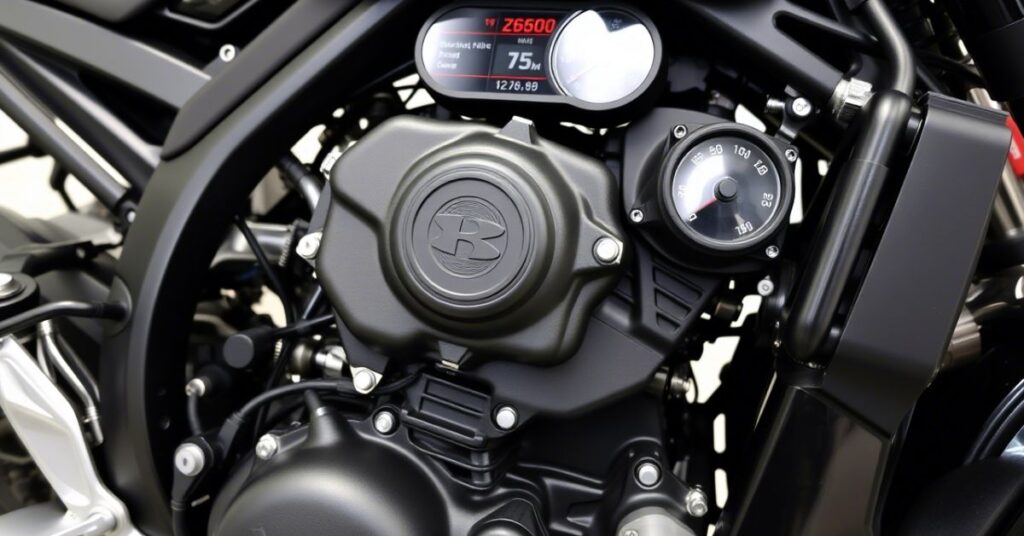
The bike can easily cruise at high speeds and feels stable and confident. Whether you’re going for a quick ride or a long weekend trip, the Kawasaki Z650 performs well in all situations.
Handling and Riding Comfort
One of the strong points of the Kawasaki Z650 is its handling. It has a lightweight chassis that makes it easy to maneuver. The bike feels planted in corners, yet light enough to handle in traffic.
The suspension setup includes telescopic forks at the front and a horizontal back-link rear shock. The suspension is slightly on the firmer side but still manages to absorb road bumps well. It gives the rider a good feel of the road without being uncomfortable.
The upright seating position, wide handlebars, and mid-set footpegs make it perfect for daily use. The seat is well-padded, and there’s enough space for both rider and pillion. Even on longer rides, the comfort level remains high.
At just under 190 kg, the bike feels light for its category. This makes it easy to manage in city riding, parking, and slow traffic.
Overall, the Kawasaki Z650 offers a great balance between sporty riding and daily comfort.
Technology and Features in Kawasaki Z650
Modern riders expect modern features, and the Kawasaki Z650 does not disappoint. It comes with a 4.3-inch TFT color display, which is crisp and easy to read. The screen shows speed, RPM, gear position, fuel level, and more.
It also supports smartphone connectivity through the Kawasaki Rideology app. This allows riders to see call notifications, check ride logs, and even monitor bike status.
LED lighting is used across the bike headlight, taillight, and indicators which improves visibility and looks modern.
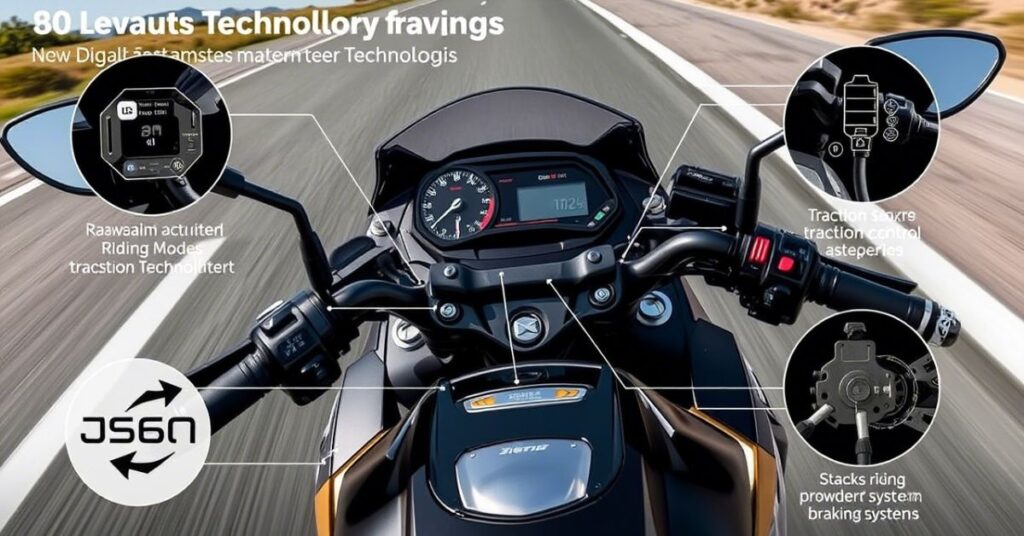
The ABS (Anti-lock Braking System) is standard, giving added safety during sudden stops. It’s useful for both new and experienced riders.
There are no riding modes or traction control in this model, but it keeps the riding experience simple and direct. The focus here is on offering real performance and rider engagement rather than too many electronic aids.
Fuel Efficiency and Mileage
For a bike in the 650cc category, the Kawasaki Z650 offers decent fuel efficiency. It’s not a commuter bike, but it manages good mileage thanks to its refined engine and efficient fuel injection.
In city conditions, riders can expect around 20 to 22 km/l. On highways, this number can go up to 25 km/l or slightly more, depending on riding habits and speed.

The bike has a 15-liter fuel tank, which gives a good range for weekend rides or even long-distance touring. You won’t need to stop for fuel too often unless you’re riding aggressively.
Here’s a quick look at the mileage in a table format:
| Riding Condition | Approximate Mileage |
| City Riding | 20 to 22 km/l |
| Highway Riding | 25 to 27 km/l |
While mileage isn’t the top reason to buy a Z650, it’s good enough to keep running costs reasonable for a bike in this segment.
Price and Variants of Kawasaki Z650
The Kawasaki Z650 is available in one main variant, which comes with standard ABS and full LED lighting. It’s priced competitively considering its features and performance.
In India, the ex-showroom price starts around ₹6.65 lakh (as of 2025). In other countries, the price may vary slightly based on taxes and registration charges.
Kawasaki offers the bike with optional accessories like frame sliders, tank pads, and more. These can be added for extra protection or to personalize your bike.
Here’s a price overview:
| Variant | Price (Ex-Showroom India) |
| Z650 (Standard ABS) | ₹6.65 lakh (approx.) |
Compared to other bikes in the middleweight category, the Z650 offers great value for its performance, reliability, and brand name.
Why You Should Consider the Kawasaki Z650
There are many reasons why the Kawasaki Z650 is a top choice for middleweight buyers. It looks great, rides smoothly, and handles well in both city and highway situations. The engine is powerful enough for fun rides but not too wild for new riders.
Its lightweight design and upright position make it friendly for daily use. The build quality is strong, and the brand is known for reliability.
While it may not have all the electronic features of some competitors, it focuses on delivering a real riding experience.
It’s also backed by Kawasaki’s wide service network and strong resale value. Whether you’re upgrading from a 300cc bike or entering the middleweight class, the Z650 is worth serious consideration.
Frequently Asked Questions (FAQs)
Is the Kawasaki Z650 good for beginners?
Yes, it’s friendly for beginners with its smooth power delivery and light handling. However, it’s best suited for riders who have some basic experience with bikes above 250cc.
What is the top speed of the Kawasaki Z650?
The top speed is around 190 km/h. It can easily cruise at 120–140 km/h on highways.
Does the Kawasaki Z650 have traction control?
No, it does not come with traction control. It keeps the electronics simple for a more direct riding feel.
How often does the Z650 need servicing?
Kawasaki recommends service every 6,000 km or once every 6 months, whichever comes first. Always follow the service manual for best performance.
Is the Z650 good for long rides?
Yes, it’s comfortable for long rides. The upright position, stable chassis, and smooth engine make it ideal for weekend trips and touring.
Lifestyle
BYD Shark Plug-in Hybrid Pickup Truck , Full Review 2025
Introduction to the BYD Shark
The BYD Shark is a brand new plug-in hybrid pickup truck from BYD, a leading Chinese electric vehicle manufacturer. This pickup is built for strength, smart features, and a better driving experience. BYD is already known for cars like the Seal and the Dolphin, but now it has entered the pickup truck market with something bold.
The BYD Shark stands out for its mix of electric and fuel power. This hybrid system gives you both strong performance and fuel savings. It is a good option for people who want a powerful truck without giving up fuel efficiency. The design is modern, the cabin is large, and the truck is full of smart technology.
People who drive for work or adventure will love this truck. It handles off-road conditions well and also gives a smooth city ride. The BYD Shark is a great choice if you want power, comfort, and advanced technology in one vehicle.
BYD Shark Features and Design
The design of the BYD Shark is modern and aggressive. It has a bold front grille, LED headlights, and strong lines across the body. This truck looks powerful even when it’s parked. It is longer and wider than many traditional pickups, which gives it a strong road presence.
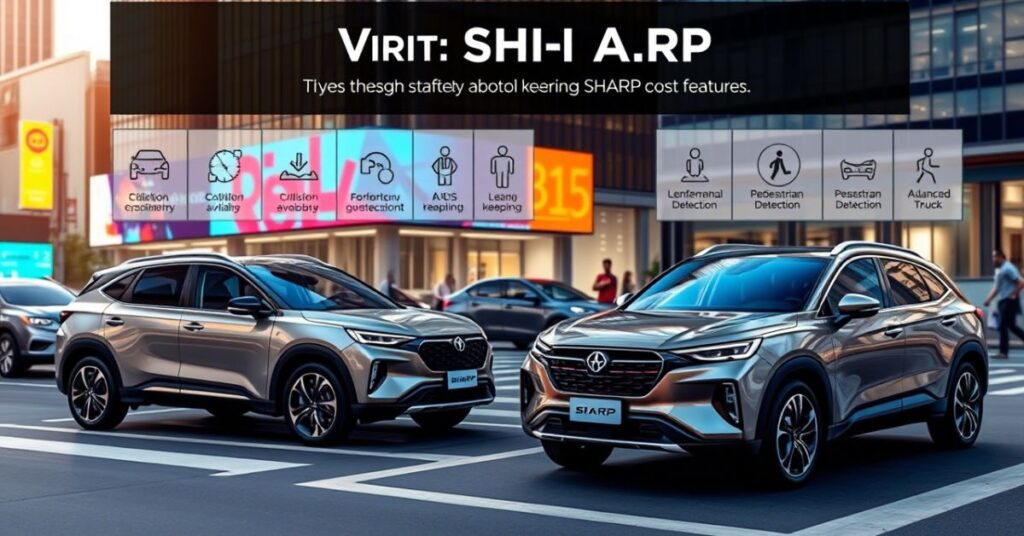
The cabin is just as impressive. Inside, you’ll find a clean layout with a large touchscreen, digital instrument cluster, and quality materials. It also offers a lot of legroom and headroom, making long drives more comfortable. Passengers in both front and rear seats get enough space.
The seats are well-padded, and the layout is driver-focused. BYD has added premium touches like ambient lighting, wireless charging, and voice controls. The infotainment system is quick to respond and easy to use.
You also get many storage areas inside the cabin. This includes cup holders, center storage, and compartments for tools or small items. The BYD Shark combines style and function well, making it not just tough but also smart.
Engine and Hybrid Technology of the BYD Shark
The most exciting part of the BYD Shark is its engine system. It runs on a plug-in hybrid (PHEV) powertrain. This means it uses both electric and petrol engines. You can charge it like an electric car, but also fill it with fuel like a normal vehicle.
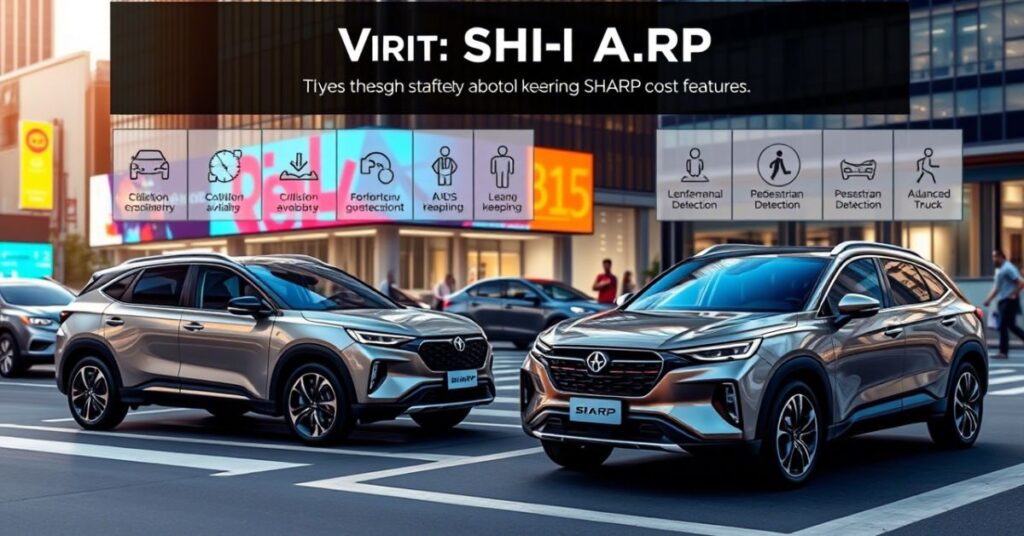
The BYD SHARP comes with a 1.5-liter turbocharged petrol engine, which works together with dual electric motors. This combo gives it strong acceleration and better fuel economy. Together, they make up to 430 horsepower, which is more than enough for any job, whether it’s carrying heavy loads or off-road driving.
The truck uses BYD’s DMO (Dual Mode Off-road) platform. This is the same platform used in some of BYD’s high-performance cars. The battery pack is large and gives up to 100 km (62 miles) of all-electric range. That’s enough for daily city driving without using any fuel.
The electric motor powers the wheels during normal driving, while the petrol engine helps during long trips or when more power is needed. You can switch between modes, depending on what you need. This makes the BYD Shark both powerful and efficient.
Performance and Driving Experience
The driving performance of the BYD Shark is smooth and confident. With the plug-in hybrid system, you get instant torque from the electric motors, which helps with fast starts. The petrol engine kicks in when more power is needed, especially during highway drives.
This truck is not just good on roads,it also performs well off-road. It has all-wheel drive and can handle mud, sand, or steep hills easily. The ground clearance is high, so you can go off the beaten path without worries.
Handling is very stable, thanks to the independent suspension system. Whether you’re carrying tools for work or heading on a weekend trip, the truck stays balanced. Steering is light for city driving but firm enough for highways and off-road trails.
Braking is smooth, and it uses regenerative braking to charge the battery when you slow down. This adds to fuel savings over time. The BYD Shark is also quiet while driving, especially in electric mode. You feel like you’re driving a modern, comfortable SUV rather than a pickup truck.
Interior Comfort and Smart Features
The interior of the BYD Shark is built for comfort and ease of use. The seats are covered in soft materials and designed to reduce tiredness on long drives. There’s a large 15.6-inch rotating touchscreen in the center. It controls music, maps, air conditioning, and more.
There’s also a digital dashboard behind the steering wheel, showing speed, range, and driving mode. The system supports Apple CarPlay and Android Auto. Voice control lets you change settings without taking your hands off the wheel.
You’ll find USB ports, a wireless charging pad, and a high-quality sound system inside. It even comes with a 360-degree camera for easy parking and off-road viewing.
Air vents reach all rows, and climate control keeps everyone comfortable. The materials used feel premium, even though the truck is meant for tough use. Whether you’re driving to work or going on a family trip, the BYD Shark’s cabin makes every journey enjoyable.
Safety Features in the BYD Shark
Safety is a big part of the BYD Shark’s design. It includes both active and passive safety features to protect you and your passengers. The truck comes with 6 airbags, anti-lock brakes (ABS), electronic stability control (ESC), and a strong body frame.
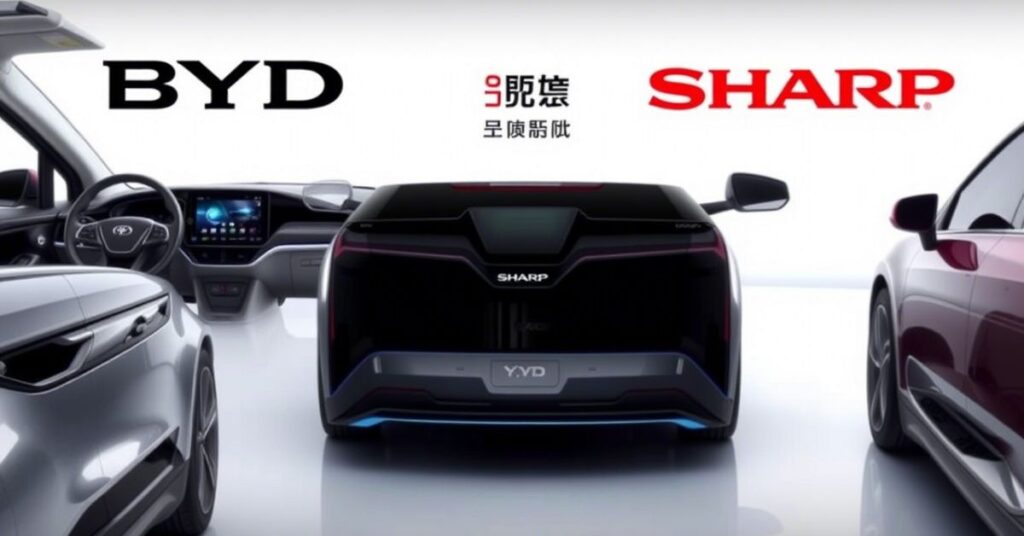
It also includes advanced driver-assist systems (ADAS). These include lane-keeping assist, automatic emergency braking, blind spot detection, and adaptive cruise control. These systems help the driver stay alert and avoid accidents.
Another important feature is the driver attention monitor. It checks if you’re tired or distracted and gives a warning. The Shark also offers a tire pressure monitor and rear cross-traffic alert. All these features work together to make driving safer.
Even in off-road conditions or during heavy rains, the truck stays stable and in control. The BYD Shark has been tested for different road and weather conditions. This makes it a reliable choice for both work and daily use.
Battery, Range, and Charging Options
The BYD Shark uses Blade Battery technology, which is known for safety and long life. This lithium-iron-phosphate (LFP) battery is fire-safe and designed to last for many years. It can handle hot and cold weather without losing performance.
The electric-only driving range is around 100 km (62 miles), which is perfect for most daily drives. When the battery runs low, the petrol engine starts working, giving a total range of over 800 km. This is very useful for people who drive long distances.
Charging the Shark is easy. You can plug it into a home outlet or use a fast public charger. With fast charging, the battery can go from 20% to 80% in less than an hour. The truck also supports vehicle-to-load (V2L). This means you can use it to power tools, lights, or even small appliances when camping or during power cuts.
Here is a simple table of the key battery and charging specs:
| Feature | Detail |
| Electric Range | 100 km (EV only) |
| Full Range | 800+ km (Hybrid) |
| Battery Type | BYD Blade Battery (LFP) |
| Charging Time (Fast) | ~1 hour (20% to 80%) |
| V2L Output | Yes, supports power output |
Pricing and Global Launch Plans
The BYD Shark is expected to be priced between $40,000 and $50,000, depending on the model and features. This makes it more affordable than many full-size hybrid trucks on the market, especially considering its smart features.
The truck is already launched in Mexico, which is one of BYD’s key markets outside China. Other global markets like Australia, South Africa, and some parts of Europe and Southeast Asia are also expected to get it soon.
BYD is focusing on countries that value both fuel savings and environmental care. Since the Shark is a plug-in hybrid, it’s a good step for people who want to move away from full fuel engines but are not ready for full electric yet.
As more people look for clean and powerful vehicles, the BYD Shark is set to gain popularity. Its smart pricing, strong hybrid system, and rich features make it a solid choice in the pickup segment.
Comparison with Other Pickup Trucks
Let’s see how the BYD Shark compares with other similar hybrid pickups:
| Feature | BYD Shark | Toyota Hilux Hybrid | Ford Ranger PHEV |
| Power | 430 hp | ~200 hp | 360 hp |
| Electric Range | 100 km | Not available | 50 to 70 km |
| Battery Type | LFP Blade Battery | Lithium-ion | Lithium-ion |
| Interior Tech | 15.6” Screen |
Lifestyle
How to Gain Subscribers Fast and Grow Your Audience Easily

How to Gain Subscriber: A Complete Guide for Beginners
Gaining subscribers is one of the most important steps in growing your presence online. Whether you’re starting a YouTube channel, email list, or blog, the number of subscribers you have shows how many people trust and follow your content.
But how to gain subscribers is a question many people ask. The truth is, there’s no magic trick. However, with the right approach, you can see fast and steady growth. The key is to offer value, be consistent, and keep your audience engaged.
In this guide, you will learn everything you need to know about gaining subscribers. We’ll cover how to attract the right people, how to keep them, and what tools or methods can help you grow faster.
Why Subscribers Matter in Digital Growth
Subscribers are more than just numbers. They represent real people who want to hear from you regularly. When someone subscribes, they are saying, “I like what you offer, and I want more.”

In platforms like YouTube or newsletters, subscribers are your core audience. They are the first to see your new content. They’re also more likely to share, comment, or even buy from you. This makes them a powerful part of your growth.
The more subscribers you have, the more trust you build. This helps with brand visibility and can even lead to new opportunities, such as partnerships or sponsorships.
Many platforms reward accounts with higher subscriber counts. For example, YouTube promotes channels with more engagement, and that includes subscribers. So if you’re wondering how to gain subscriber, it’s not just about numbers. It’s about growing a strong, active community.
Understanding Your Audience to Gain More Subscribers
Before you start asking how to gain subscribers, you must understand who you want as a subscriber. This means knowing your target audience. What do they like? What problems do they have? What type of content are they searching for?
If you create content without a clear idea of your audience, your growth will be slow. You need to make people feel like your content is made just for them. Use simple language, answer common questions, and talk about things they care about.

For example, if you’re creating videos about fitness for beginners, make sure your tone, tips, and examples are easy for beginners to understand. Speak their language.
Once your audience sees that your content is helpful and relevant, they’re more likely to subscribe. This connection helps you gain not just any subscriber but loyal ones.
Creating Quality Content That Attracts Subscribers
Quality content is one of the most important factors in gaining subscribers. If your content is not useful, entertaining, or interesting, people won’t stick around. So, if you’re serious about learning how to gain subscribers, focus on making your content better.

Good content solves a problem or answers a question. It gives people something they didn’t have before knowledge, entertainment, or a new idea. High-quality content also looks and sounds professional. That doesn’t mean it has to be perfect, but it should be clear and easy to follow.
Here are some elements of quality content:
| Element | Why It Matters |
| Clear message | Helps the audience understand your main point |
| Good visuals | Keeps people engaged and interested |
| Value-driven | Offers tips, insights, or solutions |
| Easy to read/watch | Makes it simple for the audience to follow along |
When your content is strong, people are more likely to share it and subscribe to see more.
Using Consistency to Keep and Grow Subscribers
Consistency builds trust. If you post once and disappear, your audience won’t stick around. But if you show up regularly, people know what to expect. That’s why how to gain subscribers often starts with a simple rule: be consistent.
This doesn’t mean you have to post every day. But you should have a clear schedule and stick to it. For example, if you post videos every Wednesday, make sure your subscribers can count on that.
Consistency also means keeping your style, tone, and topics similar. This helps your subscribers feel like they’re part of a familiar space. It builds a sense of community.

Platforms also reward consistency. Whether it’s YouTube, a podcast, or an email newsletter, the more regularly you show up, the more the platform promotes you.
Effective Call-to-Actions That Encourage Subscriptions
People often forget to ask for subscribers. But a simple call-to-action (CTA) can go a long way. This is when you invite your viewers, readers, or listeners to subscribe.
The best CTAs are clear and friendly. For example:
- “If you found this useful, don’t forget to subscribe for more.”
- “Join my newsletter to get tips every week.”
- “Hit the subscribe button so you never miss a video.”
Use CTAs in every piece of content. Place them at the beginning, middle, and end if possible but keep them natural. Avoid sounding pushy.
If you’re writing blog posts, place a subscription box in a visible place. If you’re making videos, add a visual prompt or mention it verbally.
A strong CTA turns a casual visitor into a loyal subscriber.
Optimizing Your Channel or Page for More Subscribers
Your content might be great, but if your page or channel isn’t inviting, people may leave. Optimizing your profile is key in the journey of how to gain subscribers.
Make sure your branding is clear. Use a good profile picture and banner. Write a short, helpful bio that tells people what they’ll get by subscribing.

Organize your content into playlists or sections. This helps people find what they need easily. Also, use keywords in your titles and descriptions. This makes your content easier to find.
Here’s a quick overview of what to optimize:
| Part of Your Page | What to Do |
| Profile Picture | Use a clear, friendly image |
| Banner/Header | Show what your channel or page is about |
| Description | Explain what you offer in simple words |
| Content Layout | Group related content together |
| Search Keywords | Use words people search for in your content |
These small changes can make a big difference in how many subscribers you gain.
Engaging With Your Audience to Build Trust
People subscribe when they feel connected. One of the best ways to build this connection is by engaging with your audience.

Reply to comments. Thank people for subscribing. Ask them what kind of content they want. This makes them feel valued.
You can also do polls, Q&As, or shoutouts. These small actions show your subscribers that you care.
When people feel part of your journey, they stick around longer. They also tell others about you. That’s how to gain subscribers naturally and build a loyal community.
Don’t treat your subscribers like numbers. Treat them like people. That personal touch can set you apart from others.
Promoting Your Content on the Right Platforms
Even the best content needs promotion. If no one sees your videos, blogs, or emails, they can’t subscribe. Sharing your work is a big part of learning how to gain subscribers.
You don’t need to be everywhere. Just choose the platforms where your audience spends time. This might be Instagram, TikTok, Facebook, or LinkedIn.

Share small clips, quotes, or highlights to draw attention. Link back to your channel or page and include a clear reason why people should subscribe.
You can also join groups or forums related to your niche. Be helpful, answer questions, and share your content when it fits the conversation.
Promotion isn’t about shouting. It’s about showing your value and inviting others to join your journey.
Analyzing and Improving What Works Best
Once you’ve been posting for a while, take time to review your results. Look at which posts got the most views, shares, or new subscribers. This helps you understand what works.
Most platforms offer insights or analytics. Use these tools to track your growth. Find out when your audience is most active. See which topics are most popular.
If something isn’t working, don’t be afraid to change it. Growth comes from learning. Try different styles, formats, or headlines. Keep testing until you find your sweet spot.

This mindset of learning and improving is key to mastering how to gain subscribers over time.
FAQs About How to Gain Subscriber
What is the best way to gain subscribers fast?
The best way is to create helpful content regularly and promote it on the right platforms. Use clear calls-to-action and talk directly to your audience.
How often should I post to gain more subscribers?
Posting once or twice a week is a good start. What matters more is being consistent so your audience knows when to expect new content.
Do I need expensive equipment to get subscribers?
No, you can start with basic tools. Focus on clear sound, steady video, or easy-to-read blogs. Quality improves over time.
How long does it take to gain 1,000 subscribers?
It depends on your niche and effort. Some channels do it in weeks, others take months. The key is to stay patient and keep learning.
Can I buy subscribers to grow faster?
Buying subscribers is not a good idea. They are often fake or not interested in your content
-

 Lifestyle1 week ago
Lifestyle1 week agoElon Musk’s America Party Will Embrace Bitcoin
-

 Lifestyle1 week ago
Lifestyle1 week agoUK Sends 2 to Prison for Combined 12 Years for Crypto Scam
-

 Lifestyle1 week ago
Lifestyle1 week agoRussia’s Energy Ministry Launches Crypto Mining Register
-
Lifestyle7 days ago
Latest News Updates: What’s Happening Around the World
-

 Lifestyle1 week ago
Lifestyle1 week agoTrump Claims Musk ‘Off The Rails’ For Making Political Party
-
Lifestyle6 days ago
Understanding Crypto Market Volatility: Tips for Investors
-
Lifestyle3 days ago
Ethereum Explained Simply: Use, Benefits & Future
-
Lifestyle7 days ago
Daily News of YouTube Automation: Updates You Can’t Miss


